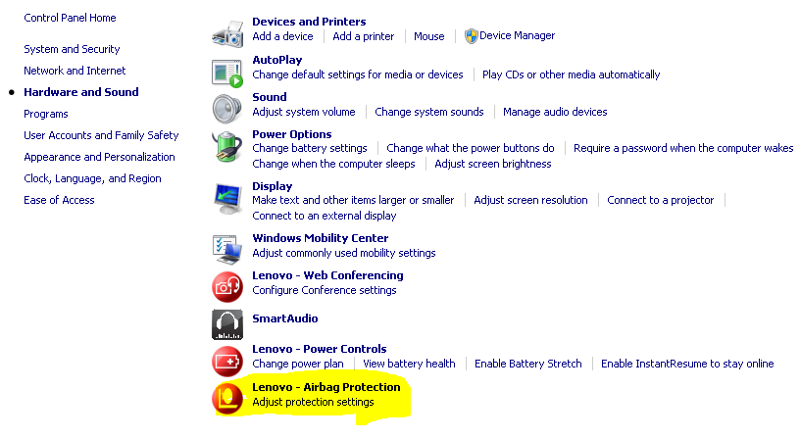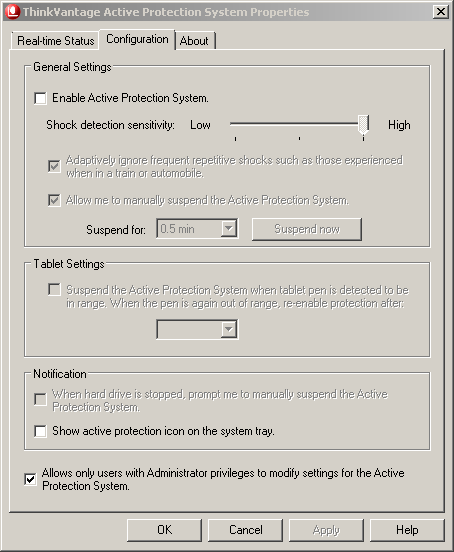I recently had a customer reporting regular glitches while performing with Cantabile. After directing him to Glitch Free (my free eBook on the topic) without success the customer eventually figured out the problem was related to the “Active Protection System” on ThinkPad laptops.
Active Protection is a mechanism where a laptop uses an accelerometer to detect that the machine is falling and quickly parks the heads off the hard drive platters to prevent the heads damaging the drive’s platters when it impacts. (Note the circular groove in the hard disk platter in the above photo — bad news).
Manufacturers have different names for this technology such as “Apple Sudden Motion Sensor”, “IBM HD Active Protection System” and “Acer GraviSense” but they all perform the same or similar function.
In this customer’s case the machine was never actually falling so it’s not exactly clear what was causing the glitches but it was enough to interrupt the smooth processing of audio in Cantabile. My guess is a poorly written driver was responsible.
Anyway, as soon as the feature was disabled audio performance was restored and the problem eliminated.
Turning Off Active Protection
Disclaimer: disabling disk protection may result in hard disk damage — do so at your own risk.
I don’t have detailed instructions for each manufacturer’s technology but presumably each is similar to the following.
Locate the appropriate section in Control Panel:

and turn it off:

You could also experiment with the different sensitivity options however I doubt this would help. Check the manual for your laptop for more details.
The Risks
Obviously there’s some risk to turning off a technology designed to protect the system and you really don’t want to end up with a drive like the one in the above photo.
You’ll need to be careful with the machine while protection is turned off — here are some tips:
- Make sure you have a backup of anything important on the drive. (You should be doing this anyway).
- Test to see if the settings make any difference on your machine. If not, you might as well leave the protection turned on.
- Consider only disabling protection when performance is critical and always re-enable it for day-to-day use.
- If you do disable protections be careful not to simply close the lid and walk off with the machine — make sure the machine has completely suspended itself and the drive has stopped spinning before picking it up.
- Switch to a solid state drive (SSD). You’ll lose some storage capacity, but they’re super fast and aren’t suspect to head/platter crashes.
Conclusion
This kind of technology is quickly becoming outdated as more manufacturers switch to solid state drives but if you’re running an older machine it’s another setting to check if you’re after reliable performance from your live rig.
